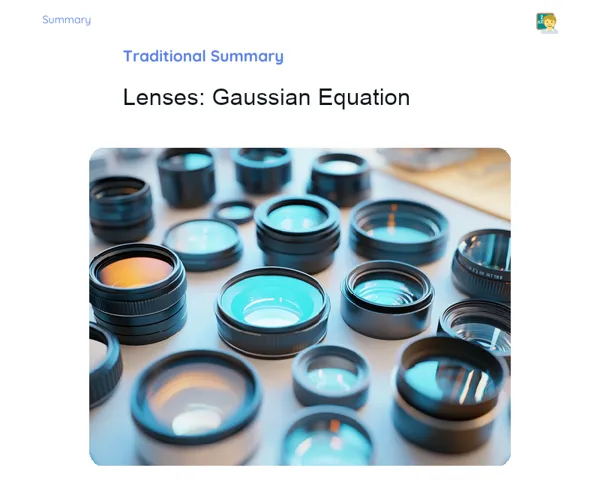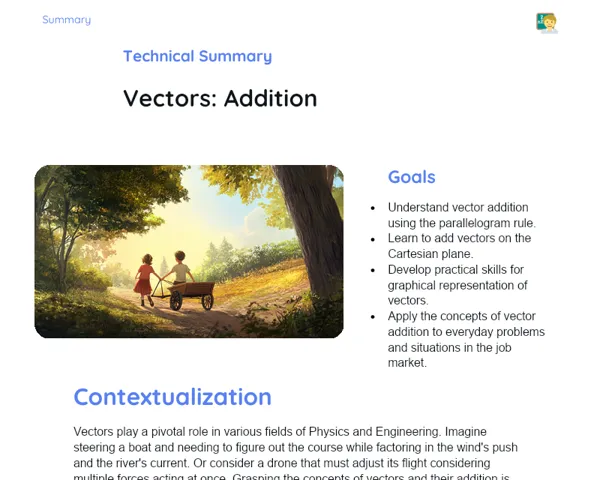Goals
1. Understand Heisenberg's Uncertainty Principle and its mathematical formulation Δx Δp ≥ ℏ/2.
2. Apply the Uncertainty Principle to calculate errors in position and momentum in various practical contexts.
3. Develop critical thinking and problem-solving skills in experimental situations.
4. Relate Heisenberg's Uncertainty Principle to contemporary technological and scientific applications.
Contextualization
Heisenberg's Uncertainty Principle is a cornerstone of quantum physics. It tells us that we cannot measure the position and momentum of a particle with infinite accuracy at the same time. This principle is vital for grasping many phenomena in the subatomic realm, such as the behavior of electrons in atoms. This understanding influences fields like chemistry, materials science, communication technologies, and even quantum computing. For example, when we try to pinpoint an electron in an atom, refining its location makes its momentum less certain, and vice-versa.
Subject Relevance
To Remember!
Heisenberg's Uncertainty Principle
Formulated by Werner Heisenberg in 1927, this Uncertainty Principle stands as one of the foundational aspects of quantum mechanics. It states that it's impossible to determine both the position and momentum of a subatomic particle with absolute precision at the same time. The equation Δx Δp ≥ ℏ/2 clarifies this relationship of uncertainty.
-
Indicates the impossibility of measuring the position and momentum of a particle with complete accuracy.
-
The equation Δx Δp ≥ ℏ/2 mathematically encapsulates this uncertainty.
-
Is essential for understanding quantum phenomena.
Physical Interpretation
The physical interpretation of Heisenberg's Uncertainty Principle tells us that the act of measuring one quantity inevitably impacts another. For example, pinpointing the position of an electron accurately makes its momentum highly uncertain, and vice-versa.
-
Affirms that measuring one quantity inevitably alters the uncertainty of another.
-
Illustration: precision in position heightens uncertainty in momentum.
-
Challenges classic notions about physical measurements.
Technological Applications
Heisenberg's Uncertainty Principle has a wide range of applications in modern technology. It's crucial for the operation of electron microscopes, which utilize electrons to produce high-resolution images of microscopic structures. Moreover, it forms the backbone of quantum computing, where the quantum characteristics of particles are harnessed to carry out complex calculations.
-
Electron microscopes: employ electrons to obtain high-resolution visuals.
-
Quantum computing: leverages quantum properties for intricate calculations.
-
Relevant in communication technologies and quantum cryptography.
Practical Applications
-
Electron Microscopes: Utilize electrons instead of light to capture high-resolution visuals, enabling detailed examination of cellular structures and materials.
-
Quantum Computing: Organisations such as IBM and Google are creating quantum computers that employ qubits to execute calculations that would be beyond the reach of classical computers.
-
Magnetic Resonance Imaging: Medical imaging techniques that depend on quantum principles to produce detailed visuals of the human body's interior.
Key Terms
-
Heisenberg's Uncertainty Principle: The assertion that it is impossible to simultaneously gauge the position and momentum of a particle with infinite precision.
-
Δx: The uncertainty associated with measuring a particle's position.
-
Δp: The uncertainty involved in measuring a particle's momentum.
-
ℏ (h-bar): Reduced Planck constant, often utilized in quantum mechanics.
Questions for Reflections
-
In which ways does Heisenberg's Uncertainty Principle challenge our traditional understanding of the physical world?
-
What philosophical implications arise from the fact that we cannot measure a particle's position and momentum with absolute precision?
-
How could our comprehension of the Uncertainty Principle influence future technological advancements?
Quantum Uncertainty Simulation
In this mini-challenge, you will engage with a digital simulation to examine the correlation between uncertainty in position and momentum of a particle. This hands-on activity will reinforce your grasp of Heisenberg's Uncertainty Principle.
Instructions
-
Access the digital quantum physics simulation provided by your instructor.
-
Conduct repeated measurements of the position and momentum of a particle in the simulation.
-
Document the gathered data and compute the products of the uncertainties (Δx and Δp).
-
Compare your findings with the theoretical formulation of Heisenberg's Uncertainty Principle (Δx Δp ≥ ℏ/2).
-
Engage in discussions with your classmates regarding variations in results and potential sources of experimental errors.



